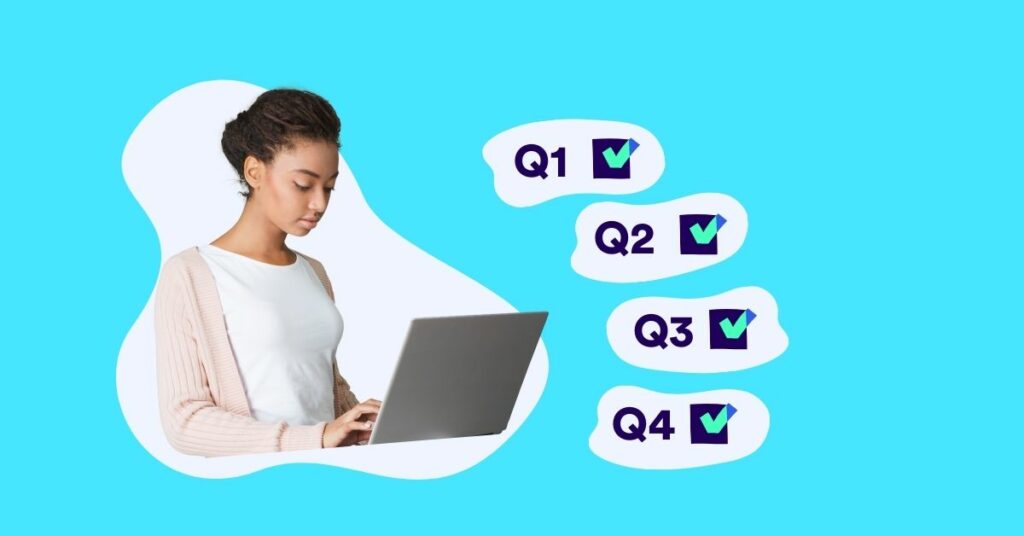What is a vAT declaration?
Let’s start with a (small) calculation example of how VAT works correctly:
Step 1: you buy something
Your supplier ‘Shoplokaal’ charges you 100 euros excluding VAT for some office supplies and, as always, adds 21% VAT. So you receive an invoice in your mailbox for 121 euros, namely 100 euros excluding VAT and 21 euros in VAT passed on.
You pay 121 euros to the supplier ‘Shoplokaal’ and because you are subject to VAT, you can recover the VAT on purchases via a vAT declaration. So the final cost for your accounts in this scenario is actually only 100 euros, which is the amount excluding VAT. You will later recover the other 21 euros via a vAT declaration.
Step 2: you sell something
You then sold something to a customer for 300 euros excluding VAT to which you had to add 21% VAT, i.e. 63 euros in VAT. So all in all, your customer has to pay 363 euros.
Step 3: conclusion
You received 363 euros including VAT from your customer, but simply take into account 300 euros excluding VAT. Because that 63 euros in VAT that your customer paid to you, you still have to pass on to the VAT authorities later.
In addition, you made purchases for 121 euros including VAT, but simply take into account 100 euros excluding VAT. Because that 21 euros of VAT you paid to your supplier can be recovered later via your vAT declaration.
So you made a profit of 200 euros. The 63 euros in VAT received on your customer and the 21 euros paid on VAT to your supplier end up in a vAT declaration, they do not affect your turnover, costs or profit.
Dexxter to the rescue?
That above was the theory. Our message, as always, is: just trust Dexxter! Because our maximum bet is on keeping your own accounts, regardless of your vAT type.
As a VAT subject entrepreneur, your Dexxter account will be 100% geared to VAT subject accounting, so you can already avoid making mistakes when entering expenses or preparing sales invoices.
When do you submit a vAT declaration?
Before we start throwing dates around, just a reassurance: everything below is fun to read, but absolutely must not be remembered! In fact, we have a super handy tax timeline in Dexxter!
This is an interactive timeline, unique per dossier, updated to who you are and what you do. Handy to always have a summary of all your tax deadlines this way.
Four vAT declarations are submitted yearly, one per quarter. In exceptional cases, you can also submit monthly vAT declarations, but this is often reserved for larger companies.
Quarter 1️⃣
This is all your purchases and sales whose invoice date falls between 1 January and 31 March.
All those purchases and sales are summarised in the vAT declaration of quarter 1, which you can submit from 1 April and must be submitted by 20 April at the latest. Payment (if you have to pay vAT) must also be made by 20 April at the latest.
Quarter 2️⃣
These are all your purchases and sales for which the invoice date falls between 1 April and 30 June.
All these purchases and sales are summarised in the vAT declaration of quarter 2, which you can submit as from 1 July and which must be submitted by 20 July at the latest. Payment (if you have to pay vAT) must also be made by 20 July at the latest.
Quarter 3️⃣
These are all your purchases and sales whose invoice date falls between 1 July and 30 September.
All these purchases and sales are summarised in the vAT declaration of quarter 3, which you can submit as from 1 October and which must be submitted by 20 October at the latest. Payment (if you have to pay vAT) must also be made by 20 October at the latest.
Quarter 4️⃣
These are all your purchases and sales whose invoice date falls between 1 October and 31 December.
All these purchases and sales are summarised in the vAT declaration of quarter 4, which you can submit as from 1 January and which must be submitted by 20 January at the latest. Payment (if you have to pay vAT) must also be made by 20 January at the latest.
And if you started your self-employed activities during the year?
Then your start date counts! Did you become subject to VAT on 20 April? Then your start date falls in the second quarter and you have to submit VAT declarations from quarter 2, so your first VAT declaration is the quarter 2 declaration with a deadline of 20 July.
Became subject to VAT on 31 December? Yes, you will have to file another vAT declaration for quarter 4 with a deadline of 20 January.
How do you file a vAT declaration?
You can do so via Intervat, the online portal from vAT administration. Through that platform, you can submit your vAT declarations in two ways. One way is manual, i.e. manually typing in all amounts, and the other way – fortunately – is via a vAT declaration file.
You can easily and automatically generate such a file in Dexxter, submit it via Intervat and you’re done.
You can do that completely yourself, quickly and efficiently. We are 100% convinced of that at Dexxter. Still have some threshold anxiety? Then feel free to view our webinar via the learning center in Dexxter. In it, we go through the VAT process from A to Z, filing that vAT declaration together so you also have the necessary visual support to get rid of your fear of thresholds.
How do I pay VAT?
As soon as you submit a vAT declaration via Dexxter, we immediately show you the payment instructions. Think of the VAT administration’s bank account number, the payment deadline, the vAT amount to be paid and your unique structured communication.
To make things really easy for you, we will also show you a QR code with the payment details. Just scan the QR code and all the details for the payment order will state in your banking app.
An empty vAT declaration?
You also have to submit an empty vAT declaration! The same deadlines count, regardless of whether there is much, little or nothing in your vAT declaration.
And this sometimes happens, especially for a start-up. For example, you have become self-employed with VAT obligations towards the end of a quarter. Consequently, you haven’t made any purchases or sales before the end of the quarter, perfectly possible, but make sure you also submit your blank vAT declaration.
Even later in your self-employed career, a blank vAT declaration can do absolutely no harm. There is nothing suspicious or strange about that, as long as you file your vAT declaration on time each time.















